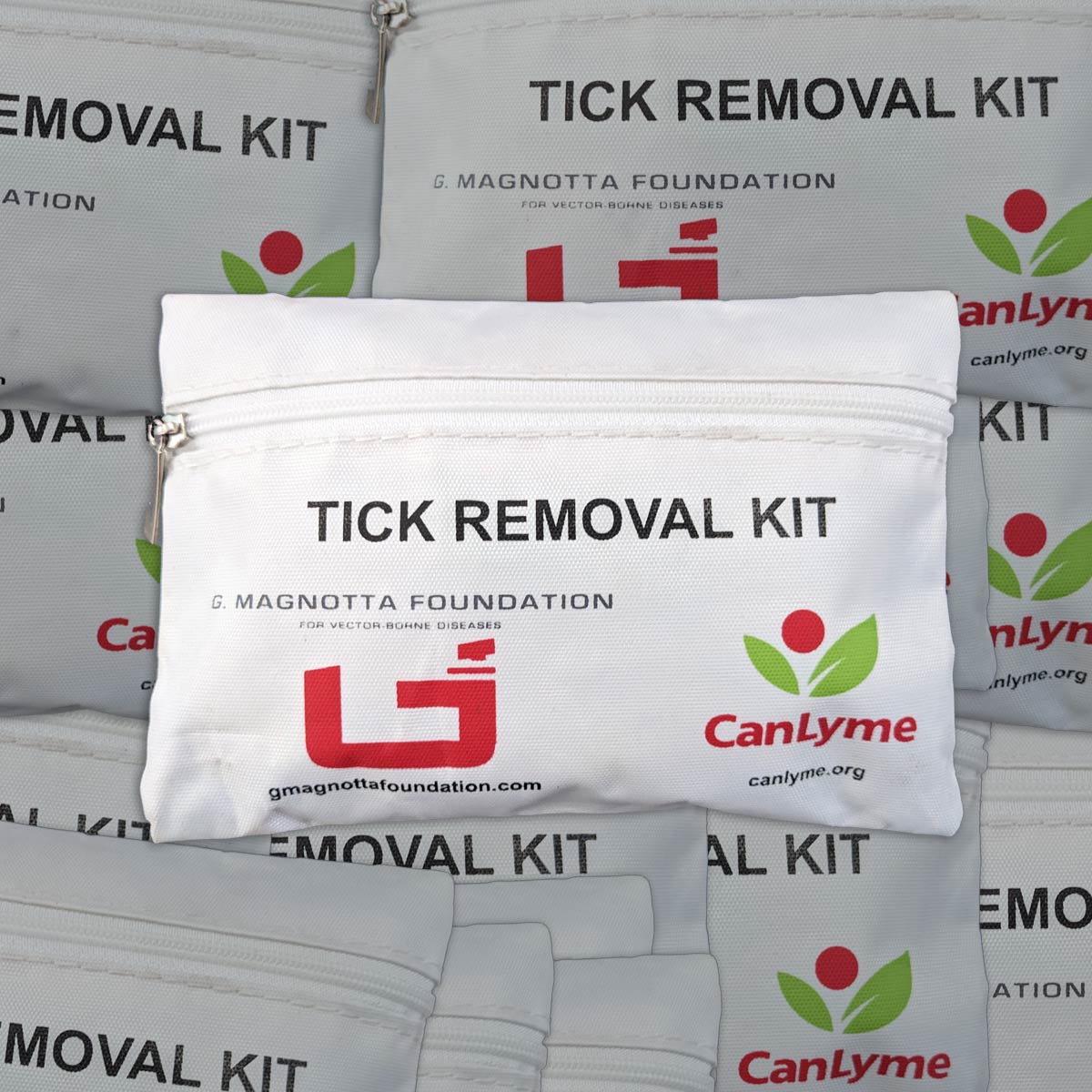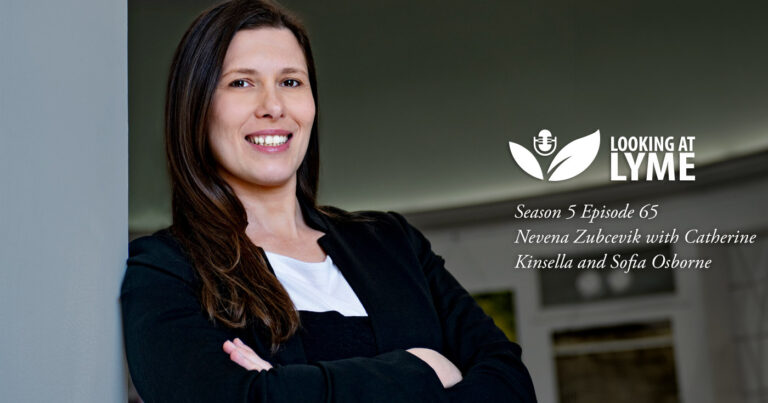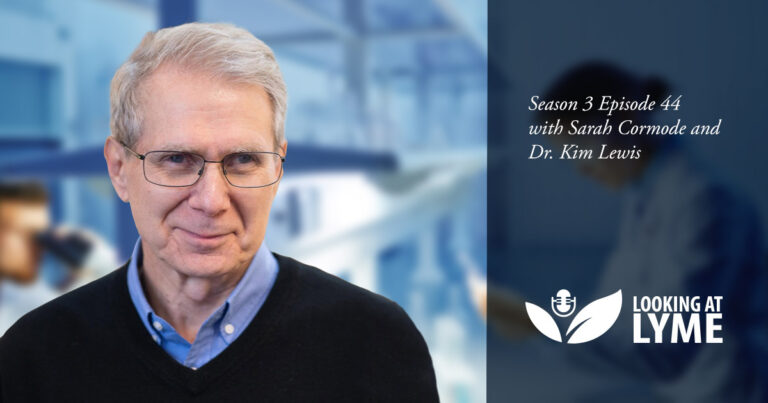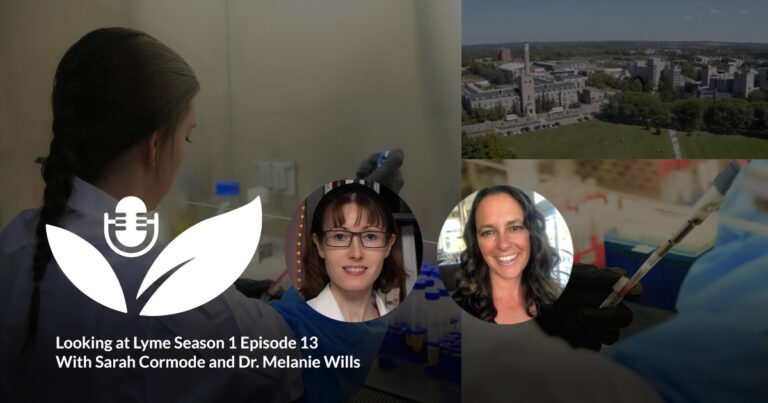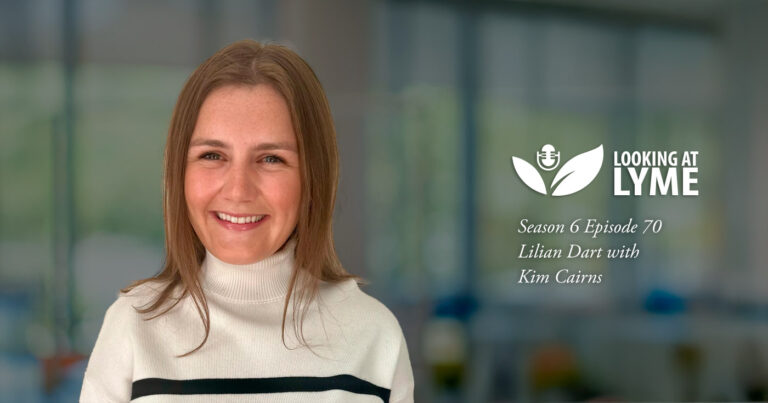68. New chronic Lyme research from the National Academies of Sciences, Engineering, and Medicine
Chronic Lyme goes mainstream.
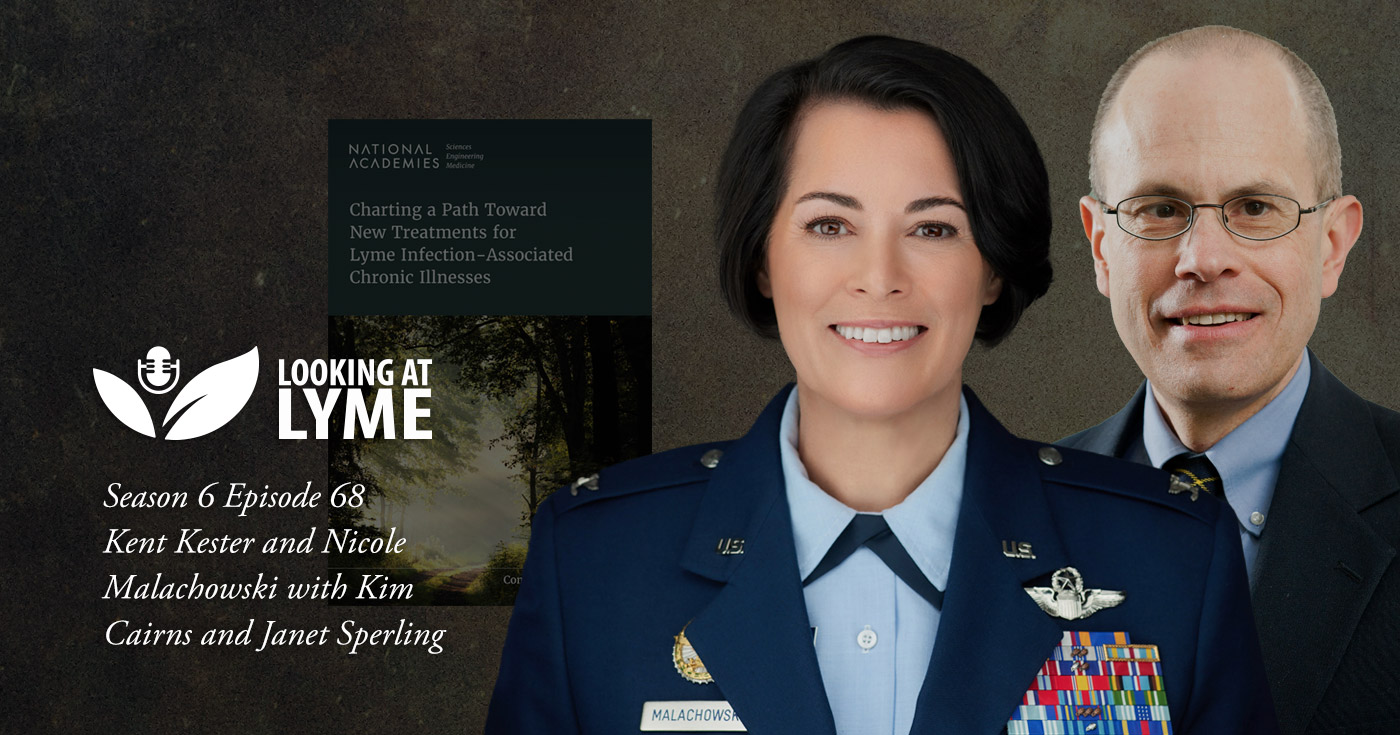
Hello, and welcome to season six of Looking at Lyme! We’re thrilled to be kicking off this season talking with contributors of an important new research report from the National Academies of Sciences, Engineering and Medicine, which studied current gaps in research and treatments for Lyme Infection-Associated Chronic Illnesses.
Dr. Kent Kester is board certified in both internal medicine and infectious diseases, is the chair of the publication committee, and is the vice chair of the National Academies of Medicine Forum on Microbial Threats. During his 24-year career in the U.S. Army, Kent led multiple research platforms at the biggest and most diverse lab with the Department of Defense, with a significant emphasis on emerging infectious diseases, and later led that institution as its commander.
Nicole Malachowski is a retired air force fighter pilot, National Women’s Hall of Famer, Keynote speaker, and Tick Borne Illness Patient Advocate. She lives and works in Colorado and she represents the patient perspective on the NASEM committee that produced this important new research.
Their new publication is called “Charting a Path Toward New Treatments for Lyme Infection-Associated Chronic Illness”. We spoke with these two about their experiences putting together this report, and what impact they hope it will have moving forward.
Citation
National Academies of Sciences, Engineering, and Medicine. 2025. Charting a Path Toward New Treatments for Lyme Infection-Associated Chronic Illnesses. Washington, DC: The National Academies Press. https://doi.org/10.17226/28578.
Joining the community
Nicole speaks about her experience joining the Lyme community as a patient when she was bitten by a tick during her time in the Air Force, stationed on the east coast. Nicole had the classic series of non-descript symptoms, and was told by doctors that there is no Lyme disease in North Carolina. It took her 1525 days, more than 25 doctors across 8 specialties, and 3 misdiagnoses to arrive at Lyme disease. Her personal experiences are part of why she was representing the patient perspective on the committee.
Kent joined the Lyme community as an infectious disease clinician and vice chair of the National Academies of Medicine Forum on Microbial Threats. In 2023, he did a workshop looking at chronic illness associated with infectious diseases such as Lyme, Covid-19, and others, and saw many commonalities including fatigue, brain fog, musculoskeletal pain and recognized that this is an area that has been stagnant for years and patient’s symptoms have been disregarded. He now sees there are a number of infections or diseases that can cause either time limited or chronic symptoms. He drew on his experiences during his military training where he saw people with what we know now as Gulf War Syndrome, where at the time, it was dismissed as nothing despite Kent being able to see that there was something wrong with the patient, but nobody knew what it was. Kent sees this report as an opportunity to dig into the topic and to support the development of a report that can potentially influence the field of research to get better treatment for the patients.
Bridging the gap in research
Janet Sperling, president of CanLyme, details how the current starting bias with Lyme is significant and troubling. She recalls back to the 1980s when she was studying medical entomology and found it simple. Back then, there was one tick, one bacterium, and the tick transferred bacterium to the human, and that was that. 20 years later when her son got Lyme, she realized how incredibly complicated it actually can be.
Janet says that her first thought from the reports is that they are trying to bridge the gap between advocates, patients, researchers, and physicians, as people keep shouting at each other but we are losing the science despite it being the tool that gets us all where we want to go.
Kent confirms that he realizes that epidemiology of Lyme is imperfect at best, and not something that is well reportable, especially due to climate change and natural spread of vectors. We have to be scientific and open to ideas knowing that we might be wrong, while keeping an open mind.
Why is this report important
Nicole says that she has been asked as the patient representative why some people have persistent symptoms after receiving the standard of care. We as the Lyme community know that some patients remain ill and have been living with this for decades, but only in the last decade has the Centers for Disease Control and Prevention come on board, and they often use Post Treatment Lyme Disease Syndrome (PTLDS) as the term for the resulting chronic illness.
This report from NASEM is different because this is an independent objective with a cross functional group of people from different backgrounds. NASEM is congressionally chartered to serve as the collective scientific voice of the USA, and so it is a big deal to see NASEM do this report and acknowledge that Lyme Infection Associated Chronic Illness (IACI) is real. Nicole explains that they use IACI to describe chronic symptoms as science may not have identified the causal mechanism of everyone’s persistent symptoms. They use this overarching term instead of Chronic Lyme to avoid talking past other scientists or researchers, as they may use the term chronic in a different way. Nicole explains that by getting on board with a common term, there will be more collaboration and efficiency moving forward.
Kent explained how the committee gave recommendations to make a consensus definition to recognize that certain current terms currently may miss patients, be specific to research programs or grants, or just lack specificity. Kent also hopes that a consensus definition will help force the policymakers to take it as a priority as it is difficult to find solutions for a problem that you cannot define. He explained that the report’s job wasn’t to make the textbook for Lyme-associated complications or chronic illness, but to look at the field and identify key areas that they saw were lacking to enable meaningful research to respond to patient needs and use that as a fulcrum to prod research forward.
One of the things Janet liked about the report was that Lyme is a huge and complicated, messy landscape, but there are subtypes. In the past, people were looking at it from different perspectives, but the NASEM report suggests to bring it all back and look at the overall pattern and then distinguish the subtypes, and then look at effective and efficient ways to treat once we have found the subtypes.
New tools in a new age of medicine
Kent speaks about the new era of artificial intelligence and molecular medicine and how with the newer tools, new patterns in patient data are being found. In his workshop in 2023 looking at the expanse of chronic illnesses associated with various infectious diseases, researchers were looking specifically at one disease. This conference brought them all together so they could see that what was happening with their viral illness was very similar to what was happening with another bacterial illness like Lyme disease. Kent suggested that as we enter the modern age, researchers should use modern tools and get funders on board to foster new work. Kent says that scientists can work in parallel by leveraging modern tools to both increase the patient’s quality of life and treatment options while also understanding why the patient is having complications, rather than looking at them in series.
Patients at the centre of the NASEM report
Nicole wanted to make it clear that the patients are the centre of the new report, especially as it is known that the interaction between researchers or academics and the patient community can be improved. She highlights the importance of patient involvement when developing patient reported outcomes. Nicole also speaks about the need for science coordination to start mining the patient registries and biobanks in a way that bridges the gap between scientific and patient communities.
Kent speaks to how symptom based approaches often do not work for patients, and there is a stigma or dogma that there is nothing wrong with Lyme IACI patients. He also speaks to patient communities that have really helped to catalyze change, such as with HIV/AIDS. Kent talks about how regardless of the disease, the patient perspective is incredibly important, especially when there is a perceived or real lack of forward movement and patients feel like they are being disregarded.
Nicole says that she spoke a lot about what is important to patients with the committee. She says she has been asked since the report came out why the report was focusing on treatments rather than cures. Nicole explained that the charge was to look at current treatments and chart a path forward, and that research should be done in parallel to both find the causal mechanism and to improve the patient’s quality of life. Nicole speaks to her own experience as a patient, explaining that if she could get 1-2 more hours of functioning out of her day before the fatigue took over that she would be unstoppable, and uses this to demonstrate why patients need to be centred in patient reported outcomes to find scientifically vetted, safe, effective treatment options.
Using this report for advocacy
Nicole shared that once this report was published, she sent it out to all 24 doctors that she had seen during her time so that they could utilize the report for education and awareness. Nicole notes that she is not worried about solving this huge problem all at once, but doing smaller things which will ripple outwards. NASEM, an important establishment, is saying that Lyme IACI is real and a big deal, which will help things move forward.
Janet spoke about how she received pushback as a patient advocate, saying that people can’t be researchers and advocates at the same time, but says that of course they can. Nicole speaks to how the policy and decision makers need to see how the new technology can do great things for this space, and to match the funding with will and intelligence to use science to bridge the gap.
Kent speaks to how the gaps need to be highlighted, whether in policy, research strategy, or definitions, they should be highlighted as areas deserving higher order assessment and implementation. Kent draws parallels to what we now know as long covid, due to the high number of patients it was accepted as a real thing and real money was put towards it to help.
Janet speaks about her strong dislike for the terminology of Post Treatment Lyme Disease Syndrome, and Nicole speaks to PTLDS being very specifically and narrowly designed for research purposes only and how Lyme IACI is much more inclusive.
Nicole suggests sharing this report with your elected representatives, so that when an opportunity presents itself for funding, they will have the information that they need to move forward.
NATIONAL ACADEMIES PRESS 500 Fifth Street, NW Washington, DC 20001
International Standard Book Number-13:
978-0-309-73098-3
Digital Object Identifier: DOI: 10.17226/28578
Library of Congress Control Number: 2025938379
National Academies of Sciences, Engineering, and Medicine. 2025. Charting a Path Toward New Treatments for Lyme Infection-Associated Chronic Illnesses. Washington, DC: The National Academies Press. https://doi.org/10.17226/28578.
The importance of biobanks
Kent explains about biobanks, and how they can be many things including a repository of data which results from biological assessments, a set of freezers full of biological samples, serums, tissues, etc. and can also be a repository of samples that have been collected as part of clinical trials. He explained how if the biobanks are done well, they can be such an important research tool to learn about effects and interventions. Kent explains that many researchers are unaware that Lyme biobanks exist, and it would be helpful to coordinate them and consolidate information.
Nicole shares that she has personally donated samples to several biobanks, and how there is still a gap in collaboration between the patient samples given and how they are being utilized by the scientific community. She says that many researchers didn’t realize how willing patients are to step up and help donate samples when they are involved with the whole process. Nicole suggests an increased level of communication and collaboration between researchers and patients who donate samples. Janet pointed out the importance of using various and correct tissues to sequence and research.
Kent identified that some of the most impactful research has been from querying well established biobanks and associated data and using translational medicine to develop effective interventions. Nicole expresses her hope that the NASEM report will show that there is an opportunity to collaborate more deeply in an area that has been undertapped.
Moving forward
Kent speaks to how the report may be operationalized, firstly by recognizing that the work done this far in the area has been outside standard funding of the industry and government, but rather done by non-profits trying to address needs of the community. An important first step is the NASEM report and getting it in front of key stakeholders to gain their interest so they understand the importance of it. The goal is to gain both allies and advocates to channel into policy and impact.
Nicole shares that NASEM is doing outreach and is always happy to speak to advocates, non-profits, elected representatives, and people in government to communicate the findings of these reports in a strategic way. Kent says there is a lot of work to be done, but a big part is getting the word out.
Announcing the first annual Canadian Tick-Borne Disease Conference
Join us for the first annual Canadian Tick-Borne Disease Conference exclusively for medical practitioners. Taking place in Toronto, November 8 and 9, this conference will allow you to hear the latest on diagnosis and treatment of Lyme and other tick-borne diseases from fellow practitioners and experts.



